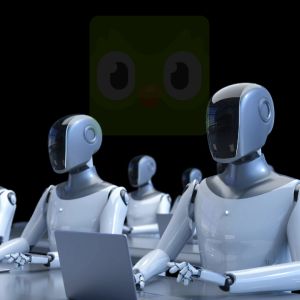Duolingo’s chief executive has retracted his claim that artificial intelligence will replace the company’s human workforce, saying instead that AI should be treated as a tool to help employees rather than supplant them. On Thursday, Luis von Ahn, Duolingo’s co-founder and CEO, posted on LinkedIn that “To be clear: I do not see AI as replacing what our employees do (we are in fact continuing to hire at the same speed as before)”. He added, “I see it as a tool to accelerate what we do, at the same or better level of quality. And the sooner we learn how to use it, and use it responsibly, the better off we will be in the long run.” von Ahn went on to outline plans for internal support as Duolingo increases its use of AI. “No one is expected to navigate this shift alone,” he said. “We’re developing workshops and advisory councils, and carving out dedicated experimentation time to help all our teams learn and adapt.” Just days earlier, Duolingo had said it would “gradually stop using contractors to do work AI can handle,” factor AI skills into annual performance reviews, and hire only when teams could not further automate their tasks. In a podcast appearance on No Priors with Sarah Guo, von Ahn predicted that AI would eventually be able to teach any subject, at scale, and deliver “better learning outcomes” than human instructors. He added that schools would still be needed for childcare. Duolingo defends AI-driven lessons amid backlash On Duolingo’s TikTok and Instagram pages, critics flooded the comments. One user responded to a video featuring a baby owl plushie by writing, “mama may I have real people running the company.” In another TikTok video , von Ahn appeared opposite a masked, hoodie-clad figure to defend the move, saying “AI will allow us to reach more people.” A spokesperson for Duolingo told Fortune that the company remains in hiring mode and is investing in employee training to make AI a benefit rather than a threat. “We’re still growing our team, and we’re training and developing our talent so they benefit from using AI,” the spokesperson said. “All AI content is created under the direction and guidance of our learning experts. We have rigorous quality standards in place to ensure that any content we publish is safe, accurate, and aligned with the CEFR,” referring to an international framework for language proficiency. Last month, payments app Klarna also backtracked on claims that its AI chatbot outperformed human staff, admitting that the bot’s “lower quality” responses meant it would resume hiring people. E-commerce platform Shopify faced the criticism as well after suggesting in an internal memo that AI-driven gains would reduce the need for new hires. AI’s promise falls short in most jobs Observers say these reversals highlight a gap between the enthusiasm for an “AI-first” approach among investors and executives and its reception by regular users and employees. Generative AI often uses huge amounts of data without reliable information, produces errors or strange outputs, and operates in a regulatory gray zone. Moreover, the expected productivity gains have only shown up in a few limited cases. An IBM survey of 2,000 business leaders found that 75% of AI projects fail to meet their return-on-investment targets. A National Bureau of Economic Research study of 25,000 workers in industries exposed to AI saw no significant increases in productivity, wages, or hours worked. “This tool that’s been adopted so fast, where the expectations are so high, [was] not making a difference in earnings was a surprise to me,” said Anders Humlum, an economics professor at the University of Chicago and one of the NBER study’s authors. He noted that the shift toward AI assistance is “much smaller and much slower” than its backers often claim. KEY Difference Wire helps crypto brands break through and dominate headlines fast



















